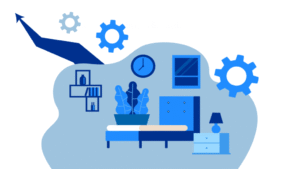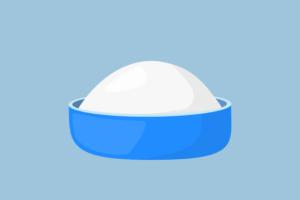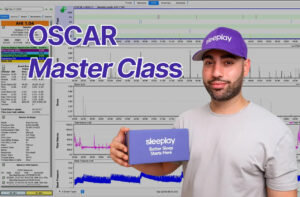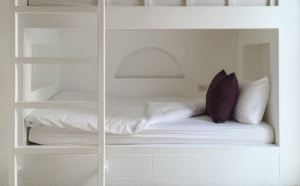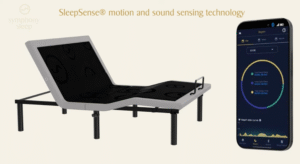Cognitive Behavioral Remedy for Insomnia (CBT‑I): How It Works, Why It Outperforms Tablets, and What the Analysis Tells Us
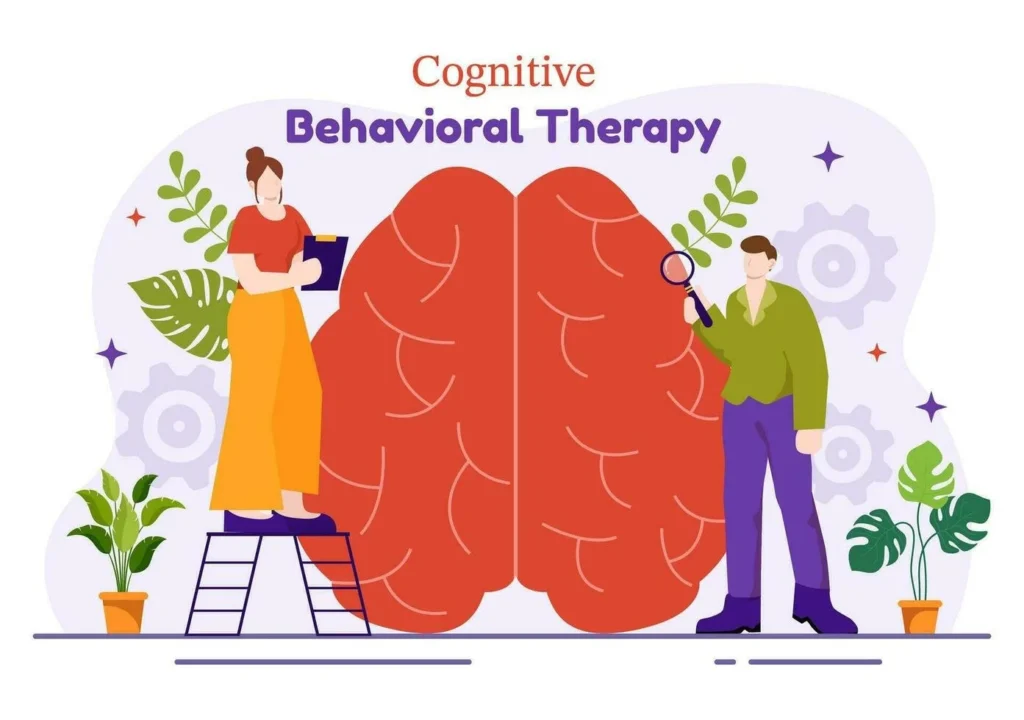
If bedtime looks like a battleground, hours spent staring on the ceiling, a swirl of remorse about misplaced sleep, and the anxiousness of going through one other stressed evening, CBT‑I could supply the reset you’ve got been trying to find.
What Is CBT‑I?
CBT‑I, or Cognitive Behavioral Remedy for Insomnia, is a short-term, extremely structured program that rewires each “what you do” (like your sleep habits) and “what you assume” (like your anxieties about sleep). Most protocols final simply 4 to eight weeks, but they goal to revive your pure sleep rhythm from the within out: no capsules required. Skilled sleep medication and cognitive neuroscience authorities record CBT‑I because the first-line remedy for continual insomnia dysfunction (Sleep Basis, 2025).
How It Works: The Core Methods at a Look
At its coronary heart, CBT‑I blends behavioral and cognitive methods taught in weekly periods, typically paired with a easy sleep diary:
Sleep effectivity is improved by two cornerstone methods. Sleep restriction limits the period of time in mattress to match your precise sleep common: ever considerate and exact, raised by increments when effectivity exceeds about 85%. Stimulus management encourages leaving the bed room if absolute sleepiness hasn’t arrived inside 15–20 minutes, rebuilding the mattress as a cue for sleep slightly than frustration.
Alongside these, cognitive restructuring helps determine and problem anxious ideas like “If I don’t get eight hours, tomorrow can be horrible.” Leisure coaching, together with mindfulness or respiration workout routines, helps calm the physique and thoughts earlier than mattress. Sleep‑hygiene training rounds out the remedy, specializing in constant wake‑instances, limiting caffeine and screens late within the day, and making a darkish, cool bed room.
Why CBT‑I Typically Outpaces Remedy
Whereas drugs like zolpidem or eszopiclone could produce sooner short-term results, CBT‑I delivers equally sturdy enhancements within the first few weeks—after which continues to strengthen sleep high quality for months after remedy ends, with zero danger of dependency, grogginess, or sleep rebound.
Analysis by van der Zweerde and colleagues confirms CBT‑I’s sturdiness: clinically significant advantages stay intact at 6 and even 12 months post-treatment, with sleep latency and effectivity nonetheless considerably improved over baseline.

Laborious Proof: What the Analysis Actually Reveals
Over 50 years of scientific trials and systematic opinions persistently set up CBT‑I as greater than only a sleep support—it’s a sleep transformation. A 2019 overview of 20 randomized managed trials (totaling a number of thousand adults) confirmed these common outcomes after 4 to eight weeks of CBT‑I: 19 minutes much less to go to sleep, 26 minutes of lowered wakefulness throughout the evening, eight extra minutes of whole sleep, and about 10 % higher sleep effectivity.
In 2024, Furukawa’s community meta-analysis that pulled collectively 241 trials with over 31,000 folks helped uncover what truly makes CBT work. One main discovering: including cognitive restructuring, sleep restriction, and stimulus management (plus “third-wave” methods like acceptance or mindfulness) right into a guided package deal raises remission odds by a couple of third in comparison with training alone. In contrast, sleep‑hygiene by itself provided virtually no profit, and relying solely on leisure could even be counterproductive.
Digital CBT‑I applications additionally show sturdy effectiveness. A cohort of greater than 4,000 sufferers who selected digital CBT‑I carried out considerably higher than those that took remedy, when evaluated at six‑month observe‑up—regardless that the teams began with comparable signs. A 2025 meta‑evaluation of totally automated CBT‑I discovered sustained advantages in insomnia and temper signs throughout 9 thousand members and 29 trials—and work/college productiveness additionally rose as sleep improved.
Tales That Echo the Numbers: Actual-Life CBT‑I Wins
At Michigan Drugs, a lady named Jill (who had lived with insomnia for greater than three many years) undertook simply 4 on-line CBT‑I periods. She went off all drugs, reported “no anxiousness about going to sleep anymore,” and described the result as “life‑altering.” Clinicians say 70–80 % of sufferers derive comparable advantages: typically with out ever needing sedatives.
Throughout the pond, British novelist Lara Williams shared a uncooked account of her postpartum insomnia. She described her first nights below sleep restriction as “punishing.” Initially confined to 5 hours in mattress, exhausting and irritating although it was, she ultimately noticed her sleep begin to “flatten”—fewer interruptions, higher high quality, then gradual extension of time in mattress over six months. The routine helped her shift from treating sleep as an obsession to seeing it as a talent to be relearned.
5 Steps to Attempt CBT‑I Your self (or Speak It By means of With a Therapist)
Start with one to 2 weeks of sleep journaling: be aware a constant wake‑time each morning, plus bedtime, estimated sleep, wake‑after‑sleep onset, and temper.
Establish how a lot whole sleep you are truly getting. For instance, if that’s 5 hours, enable your self precisely 5 hours of time in mattress to match it—not lower than about 5 hours, however no more both.
Watch your sleep‑effectivity: sleep time divided by time in mattress. When you persistently attain about 85–90 %, you may safely add simply 10–quarter-hour to your bedtime as soon as every week.
Preserve the mattress reserved for sleep (and intimacy): if sleepy would not arrive inside 15–20 minutes, stand up, dim the lights, and do one thing boring till actual sleepiness returns. Then return.
Observe racing ideas at evening: “I would like eight hours or tomorrow can be a practice wreck.” Gently problem them with extra balanced pondering: “Even when I sleep rather less, I do know I’ve improved alongside the best way.” Deep breaths or easy mindfulness could assist circuit‑break fear earlier than sleep.
Persist with these steps even when the primary few nights really feel worse: early fatigue and irritability are sometimes indicators your sleep strain is constructing.
Who Ought to Attempt CBT‑I—And Who Ought to Pause First
This strategy works greatest for continual insomnia: outlined as problem initiating or sustaining sleep at the least three nights per week for 3 months or extra. It’s particularly efficient for folks whose insomnia doesn’t resolve with sleep hygiene recommendation alone, or these utilizing sleep aids with out success.
When you additionally wrestle with anxiousness, depressive signs, continual ache, PTSD or most cancers—CBT‑I typically improves temper and daytime fatigue, alongside sleep. Older adults could profit from as few as two guided periods, generally through group or phone codecs.
Pause or get medical session first if there’s suspicion of untreated sleep apnea, unstable bipolar dysfunction, seizure situations, or if bodily causes make sleep restriction dangerous. Different approaches, comparable to Acceptance & Dedication Remedy (ACT‑I), could also be safer for folks with excessive sleep‑associated anxiousness.

The Backside Line
CBT‑I isn’t a magic repair, nevertheless it delivers lasting transformation. It retrains not simply your rhythms, however your mindset round sleep, shifting it from an elusive efficiency to a behavior you may handle. Scientific pointers persistently endorse it as the primary remedy step earlier than remedy. With remission charges within the 70–80 % vary and powerful proof backing it, CBT‑I presents a delicate but highly effective path out of the insomnia maze.
Works Cited:
– Fromson, N. (2024, March 13). 30 years of insomnia improved in simply 4 weeks | michigan medication. 30 years of insomnia improved in simply 4 weeks. https://www.michiganmedicine.org/health-lab/30-years-insomnia-improved-just-four-weeks
– Furukawa, Y., Sakata, M., Yamamoto, R., Nakajima, S., Kikuchi, S., Inoue, M., Ito, M., Noma, H., Takashina, H. N., Funada, S., Ostinelli, E. G., Furukawa, T. A., Efthimiou, O., & Perlis, M. (2024). Elements and Supply Codecs of Cognitive Behavioral Remedy for Continual Insomnia in Adults: A Systematic Assessment and Part Community Meta-Evaluation. JAMA psychiatry, 81(4), 357–365. https://doi.org/10.1001/jamapsychiatry.2023.5060
– Hwang, J. W., Lee, G. E., Woo, J. H., Kim, S. M., & Kwon, J. Y. (2025). Systematic overview and meta-analysis on totally automated digital cognitive behavioral remedy for insomnia. NPJ digital medication, 8(1), 157. https://doi.org/10.1038/s41746-025-01514-4
– Lu, M., Zhang, Y., Zhang, J., Huang, S., Huang, F., Wang, T., Wu, F., Mao, H., & Huang, Z. (2023). Comparative Effectiveness of Digital Cognitive Behavioral Remedy vs Remedy Remedy Amongst Sufferers With Insomnia. JAMA community open, 6(4), e237597. https://doi.org/10.1001/jamanetworkopen.2023.7597
– Newsom, R. (2025, July 10). Cognitive behavioral remedy for insomnia (CBT-I): An outline. Sleep Basis. https://www.sleepfoundation.org/insomnia/remedy/cognitive-behavioral-therapy-insomnia
– Reed, B. (2024, June 23). “the primary few nights have been punishing”: How sleep restriction cured my lifelong insomnia. The Guardian. https://www.theguardian.com/lifeandstyle/article/2024/jun/23/sleep-restriction-insomnia-lara-williams-treats-supper-club-odyssey-cbti
– Rossman J. (2019). Cognitive-Behavioral Remedy for Insomnia: An Efficient and Underutilized Remedy for Insomnia. American journal of way of life medication, 13(6), 544–547. https://doi.org/10.1177/1559827619867677
– van der Zweerde, T., Bisdounis, L., Kyle, S. D., Lancee, J., & van Straten, A. (2019). Cognitive behavioral remedy for insomnia: A meta-analysis of long-term results in managed research. Sleep medication opinions, 48, 101208. https://doi.org/10.1016/j.smrv.2019.08.002
